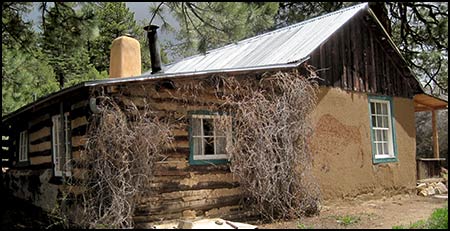The DH Lawrence Ranch has been closed to the public for the last ten years. Despite that, I was able to get a tour of the place, thanks to Joan Cok and the Division of Continuing Education at The University of New 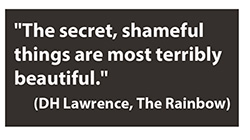 Mexico.
Mexico.
Born in 1885, David Herbert Lawrence was an English wordsmith, whose racey novels — Lady Chatterley's Lover in particular — titillated some readers in England and America and enraged the others.
Lawrence died in 1930, at the tender age of 44, but the flap caused by that book (mild by today's standards) landed his publisher in obscenity court in 1960 and helped kindle a sexual revolution.
I had been trying to visit the ranch for several 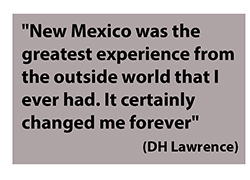 years without success. I even wrote to the university's provost and asked him why the place wasn't more accessible.
years without success. I even wrote to the university's provost and asked him why the place wasn't more accessible.
“The DH Lawrence ranch is in pretty bad shape these days,” Chaouki Abdallah wrote back. “It needs a lot of updating and up-keeping (many millions!) before it can be advertised.”
I wasn't about to give up. I figured there must be a way to visit DH Lawrence's old summer get-away, 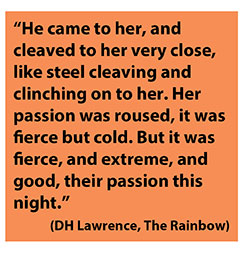 located outside of Taos, New Mexico. It didn't seem right that this international landmark wasn't open to the public.
located outside of Taos, New Mexico. It didn't seem right that this international landmark wasn't open to the public.
DH Lawrence spent a total of 11 months at the ranch, from 1923 to 1925. He first visited it in his late 30s, along with his wife Frieda, at the invitation of Mabel Dodge Lujan, a New York socialite and arts patron who lived in Taos.
Mabel Dodge owned 160 acres of land on Lobo Mountain near San Cristobal — then known as the 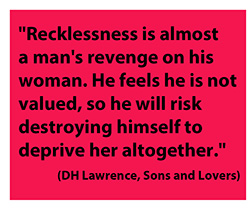 Kiowa Ranch — and eventually traded the land and its buildings for Lawrence's original manuscript of Sons and Lovers.
Kiowa Ranch — and eventually traded the land and its buildings for Lawrence's original manuscript of Sons and Lovers.
I wanted to visit the DH Lawrence Ranch the moment I first heard about it. Lawrence is one of the three superstars in my holy trinity of New Mexican immigrants, sharing the limelight with Georgia O'Keeffe and Billy the Kid.
My feelings for Lawrence deepened after my 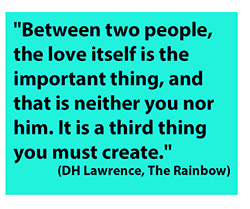 family bought me a Kindle for my 53rd birthday. Upon receiving this gift I downloaded The Lost Girl, Sons and Lovers and The Rainbow from the Amazon bookstore and was bowled over by his lyrical style, his descriptions of nature, his passionate dialogue and steamy prose.
family bought me a Kindle for my 53rd birthday. Upon receiving this gift I downloaded The Lost Girl, Sons and Lovers and The Rainbow from the Amazon bookstore and was bowled over by his lyrical style, his descriptions of nature, his passionate dialogue and steamy prose.
The way Lawrence combined words was unlike anything I had ever read; and now, more than ever, I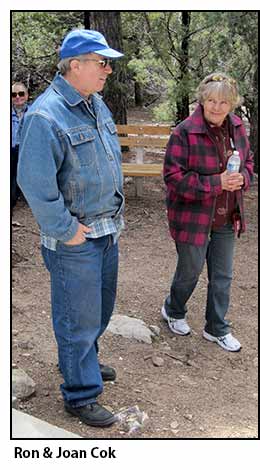 wanted to see the place he called home. Was that asking too much?
wanted to see the place he called home. Was that asking too much?
My big break came in the spring of 2012 when Joan Cok, Program Supervisor of The Story of New Mexico Travel and Lecture Series contacted the physical plant at UNM and arranged a field trip to the ranch. I promptly registered for the $98 pilgrimage and, on April 27th a couple dozen other Lawrence fans and I piled into two university vans and headed north.
It's a three-hour, 155-mile drive, from Albuquerque to Lobo Mountain, 20 miles northwest of Taos, and it was a luxury to be chauffeured that 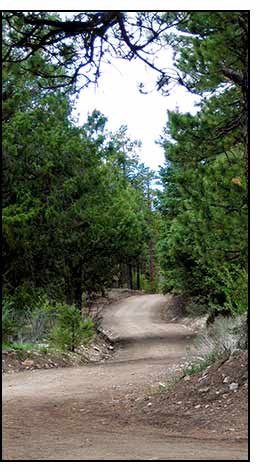 distance in a reliable vehicle. At around noon we turned off New Mexico State Road 522 and onto DH Lawrence Road, a bumpy six-mile dirt road that twisted, curved, rose and fell through arid hills inhabited by thirsty pinon trees.
distance in a reliable vehicle. At around noon we turned off New Mexico State Road 522 and onto DH Lawrence Road, a bumpy six-mile dirt road that twisted, curved, rose and fell through arid hills inhabited by thirsty pinon trees.
We rattled over a cattle guard, passed by sinister no trespassing signs and, at 8600 feet, arrived in a place that was noticeably greener and cooler than the valley below. Ponderosa pines and a large pasture greeted us as we passed through a sturdy metal gate unlatched by Ricardo, the UNM groundskeeper. We parked near the front of a large two-story cabin (built by Frieda after Lawrence's death) and were greeted 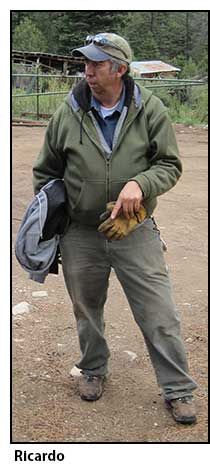 by Rick Ruminski, a planner at the physical plant at UNM, and Bill Haller, president of the Friends of DH Lawrence, based in Taos.
by Rick Ruminski, a planner at the physical plant at UNM, and Bill Haller, president of the Friends of DH Lawrence, based in Taos.
The DH Lawrence Ranch was willed to the University of New Mexico by Frieda in 1956. At that time UNM moved cabins from the Los Alamos National Laboratories onto the ranch to be used as dormitories. Those cabins had originally housed scientists who worked on the atomic bomb for the Manhattan Project. The university also brought electrical power and gas up to the ranch. “That was a time when you could get things done without having to prepare a vast legion of legal documents,” said Ruminski.
UNM also built a conference center first used by 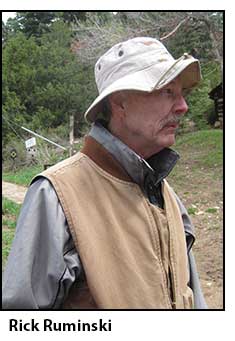 the Peace Corps to teach mountaineering and Jeep driving, a venture that brought research and administrative dollars into the University.
the Peace Corps to teach mountaineering and Jeep driving, a venture that brought research and administrative dollars into the University.
UNM rented out the conference center and the cabins to anybody who wanted to use them after the Peace Corps left town and they were used by high school marching bands, international physicists and writers groups.
“Life at the ranch for visitors to the cabins was primitive but it was better than camping out,” said Ruminski. “They had a heater and a stove and a 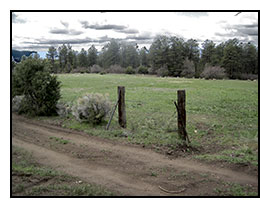 bathroom but you had to bring everything else.
bathroom but you had to bring everything else.
“It got so dark and so quiet when you were in those cabins and the sun went down,” he said. “We liked to come out here in the winter on a full moon when it was snowing: You almost had to wear sunglasses just to go out at night."
Public access to the ranch ended when the UNM biology department sampled for the presence of 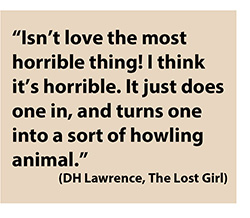 Hantavirus from the deer mice population and the results came up positive.
Hantavirus from the deer mice population and the results came up positive.
“The UNM legal department said: You can't continue to rent out the cabins unless you can guarantee that there are no mouse droppings inside,” said Ruminski. “So the University just shut 'em down because they were not that heavily used anyway. They were also pretty much rundown: They were designed to last until 1942.”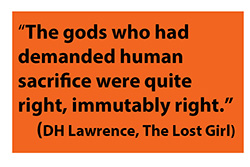
I asked him if the university would be willing to accept outside donations in order to get the Lawrence Ranch up and running.
“Sure! Let me get out my tin can,” he joked. “No, we're working on it. As a matter fact the Taos Community Foundation has generously granted us some money. I'm not gonna hit anybody up but that would be fine if we could turn this place into The Bill Gates Conference 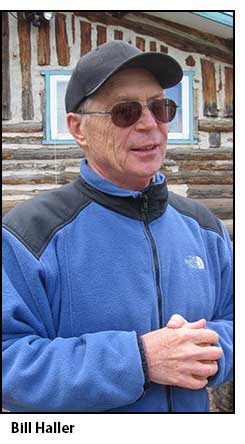 Center at the University of New Mexico. But right now we are mainly concentrating on the cultural property: to see what we can do to stabilize them, preserve them, and after that, improve them as best we can.”
Center at the University of New Mexico. But right now we are mainly concentrating on the cultural property: to see what we can do to stabilize them, preserve them, and after that, improve them as best we can.”
The “cultural property” is an area of about 10 acres that contains the places fans like myself were hungering to see. Ruminski handed us over to Bill Haller, president of the Friends of DH Lawrence, so that we could learn more about it.
Haller works at Cid's Food Market, a health food store in Taos. “Lawrence took me to places I've never seen before. He helped me with my journey, though 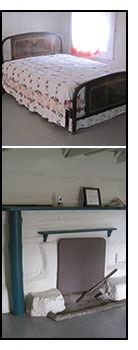 I've probably read more about Lawrence's life than his literature, to be honest.”
I've probably read more about Lawrence's life than his literature, to be honest.”
Haller gave us a lengthy biography of Lawrence, from his birth to his liaison with his professor's wife, Frieda Richthofen (a distant relative of the Red Baron). When he got to the part where Frieda and Lawrence arrived in Santa Fe on September 11th, 1922 (on Lawrence's 37th birthday) he led our group up a trail to the “homesteader's cabin.”
Lawrence and Frieda lived in this rustic three room cabin built from ponderosa pine and adobe bricks in the late 1800s. Sunlight pouring through its windows revealed a simply-decorated interior that was heated by a fireplace. The building had a dirt floor during 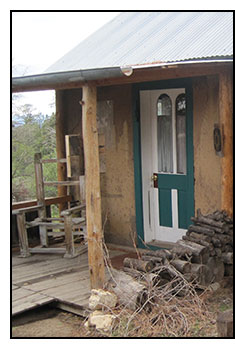 Lawrence's time that has since been replaced with wood.
Lawrence's time that has since been replaced with wood.
As I surveyed the cabin I thought that a writing desk and a few strategically placed props would nicely complete the idyllic picture of a writer's nest.
A towering ponderosa pine stands outside the front door of the cabin. This is known as The Lawrence Tree (1929) because it became the subject of a 31x40” oil-on-canvas painting by Georgia O'Keeffe. I lay down on the ground and stared at the sky through the tree's branches in an effort to recapture that pivotal moment in art history.
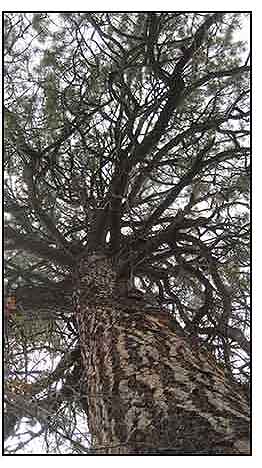 A tiny 100-square-foot dwelling stands adjacent to the homesteader's cabin known as the Dorothy Brett Cabin. In 1924 Lawrence tried to convince some friends in England to return to New Mexico with him in order to create a utopian society he called Rananim, but only Dorothy Brett, a deaf artist (who owned an ear trumpet named Toby) would make the journey.
A tiny 100-square-foot dwelling stands adjacent to the homesteader's cabin known as the Dorothy Brett Cabin. In 1924 Lawrence tried to convince some friends in England to return to New Mexico with him in order to create a utopian society he called Rananim, but only Dorothy Brett, a deaf artist (who owned an ear trumpet named Toby) would make the journey.
“Lady Brett” took up residence in the cozy one-room dwelling where she typed Lawrence's manuscripts. She became an American citizen in 1938 and died in Taos in 1977.
“She never married but she was very close to 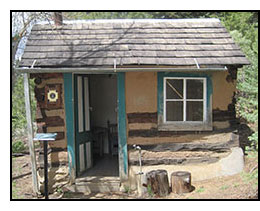 Lawrence,” Haller said as we checked out the interior of Lady Brett's tiny cabin. “The story goes: they met in a motel room one night and basically it failed. In the whole scheme of things I don't think it was really all that important to Lawrence, to Brett or to Frieda. They didn't put as much importance into it as we do . . . you know, the sensationalism.” (It didn't
Lawrence,” Haller said as we checked out the interior of Lady Brett's tiny cabin. “The story goes: they met in a motel room one night and basically it failed. In the whole scheme of things I don't think it was really all that important to Lawrence, to Brett or to Frieda. They didn't put as much importance into it as we do . . . you know, the sensationalism.” (It didn't 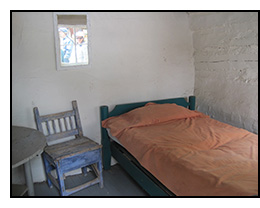 take much imagination to figure out what Haller meant by it.)
take much imagination to figure out what Haller meant by it.)
Next, we paid our respects to Lawrence by visiting his memorial. Although Lawrence died and was buried in Italy, Frieda had his body exhumed, cremated and sent back to the ranch.
We reached the one-room shrine by walking up a zigzagged concrete path that dramatically ascended a 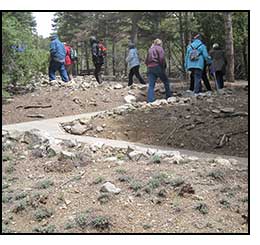 lightly forested hill. The memorial is housed within a white building with a pitched roof that is entered through a pair of sturdy wooden doors.
lightly forested hill. The memorial is housed within a white building with a pitched roof that is entered through a pair of sturdy wooden doors.
Frieda wanted to store Lawrence's ashes in an urn within the memorial but Lady Brett and Mabel Dodge were intent on scattering them. Frieda settled the matter by dumping his ashes into a wheelbarrow of wet cement which became Lawrence's altar. Or so the story goes.
A statue of a phoenix standing on top of the altar 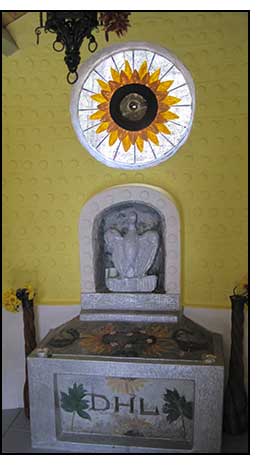 bearing the initials “DHL” dominates the interior of the memorial, beneath a round, painted window. A framed letter from the American Consulate in Marseille, France, hangs on the wall testifying to the authenticity of Lawrence's ashes (wherever they may be). Frieda's grave, marked by a large, engraved marble stone, guards the entrance of the memorial.
bearing the initials “DHL” dominates the interior of the memorial, beneath a round, painted window. A framed letter from the American Consulate in Marseille, France, hangs on the wall testifying to the authenticity of Lawrence's ashes (wherever they may be). Frieda's grave, marked by a large, engraved marble stone, guards the entrance of the memorial.
UNM's Physical Plant has done a wonderful job of preserving and restoring the cultural properties. The homesteader cabin and the Brett cabin appear neat as a pin and are bone dry. The Lawrence Tree is also in splendid condition. Any conservatory sins were 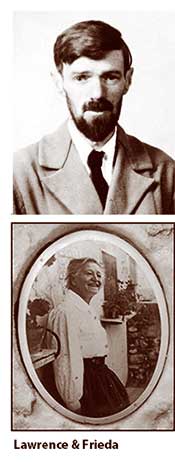 minor, forgivable and easily reversible, like the modern metal guttering system that diverts water from the fragile foundation of the historic cabins.
minor, forgivable and easily reversible, like the modern metal guttering system that diverts water from the fragile foundation of the historic cabins.
The DH Lawrence Ranch is a jewel in the crown of the University of New Mexico. Not only is the ranch a beautiful and inspiring place, but its connection with one of the world's greatest writers makes it a tourist destination.
As I prepared to go home I wondered whether the conference center and overnight accommodations mentioned by Ruminski were really necessary. UNM had gone down that slippery slope once before and abandoned it. Surely they have enough problems without hosting a conference center in the middle of nowhere or becoming an innkeeper to picky guests.
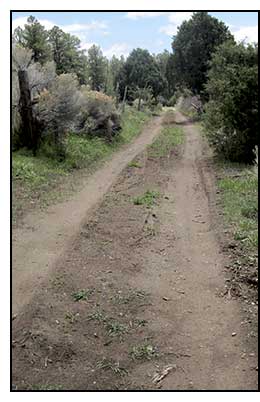 Moreover, the ranch is much drier now than it was in Lawrence's time and the lack of water could create problems in the future.
Moreover, the ranch is much drier now than it was in Lawrence's time and the lack of water could create problems in the future.
UNM's Continuing Education program has taken the bold step of setting up infrequent tours of the DH Lawrence Ranch and anybody with $100 to burn can register to take a guided tour, walk in the footsteps of DH Lawrence and learn every honorable and lascivious detail they ever wanted to know about the man, his life and his writing.
Having said that, $100 is a lot of money and the tours fill up quickly. UNM needs to figure out a way to make the cultural properties more accessible, affordable and secure because it's going to be difficult to keep Lawrence's hardcore fans away.
Note: Chris Branzan writes:"There is a piece of information which needs to be modified: Lawrence did not die in Italy, but in France, in the small town of Vence - often mistakenly quoted as Venice - located 40min away from Nice. Here is a photo I took last Sunday of the DH Lawrence memorial on the site of the former sanatorium where he had stayed in Vence:"

Thank you for visiting Chucksville and reading my story. Please sign my guestbook.
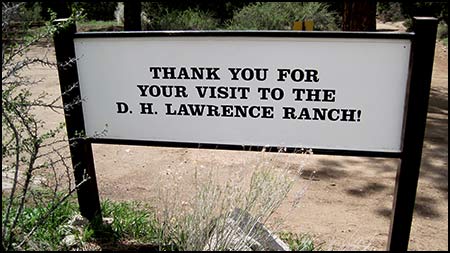
|
|

